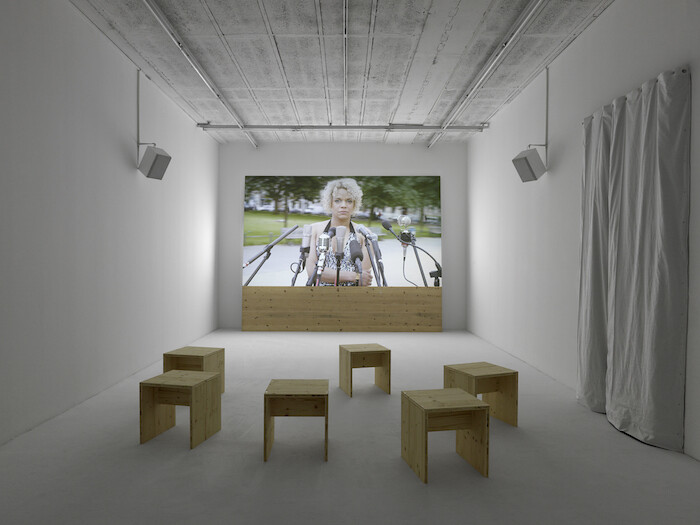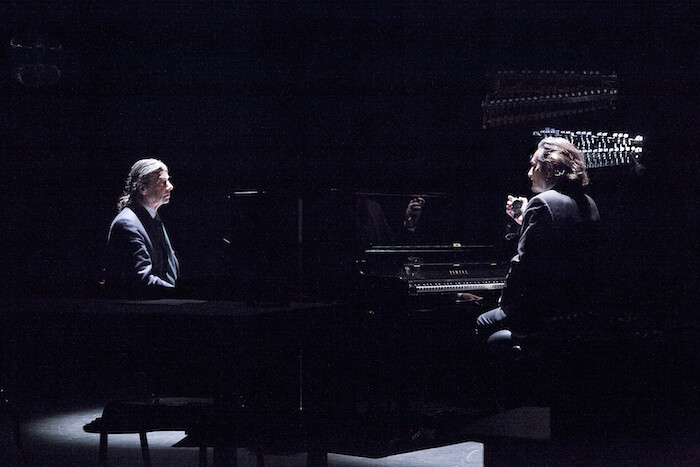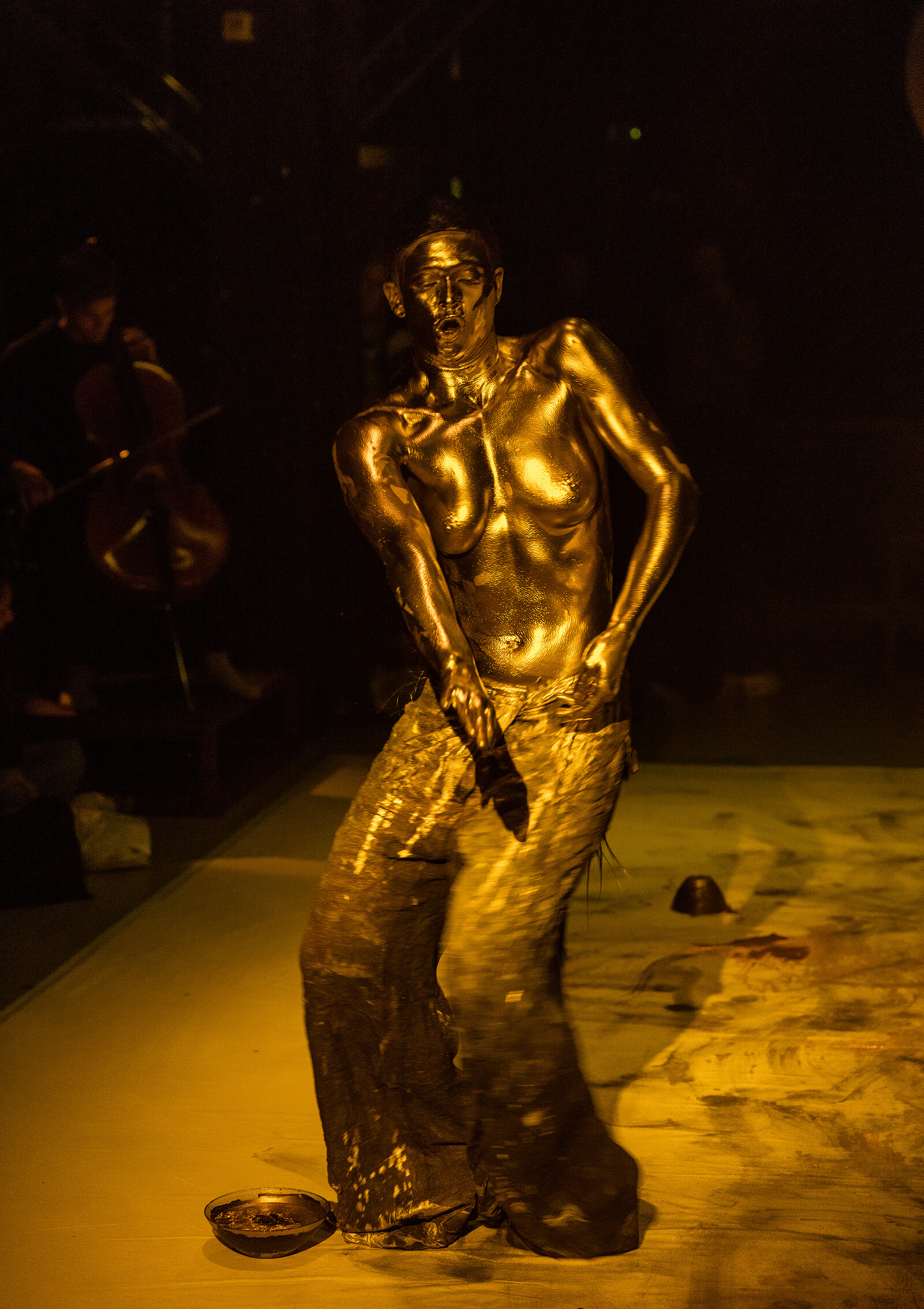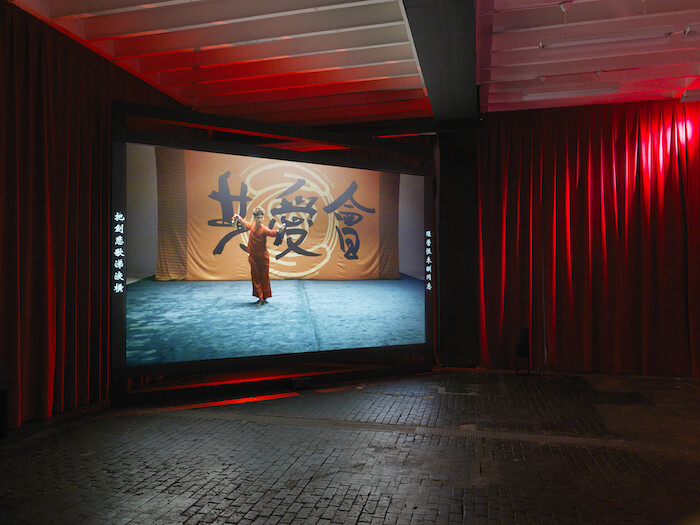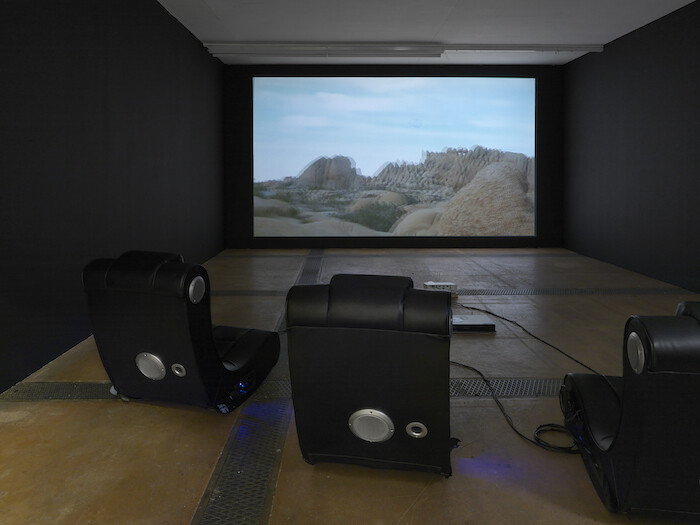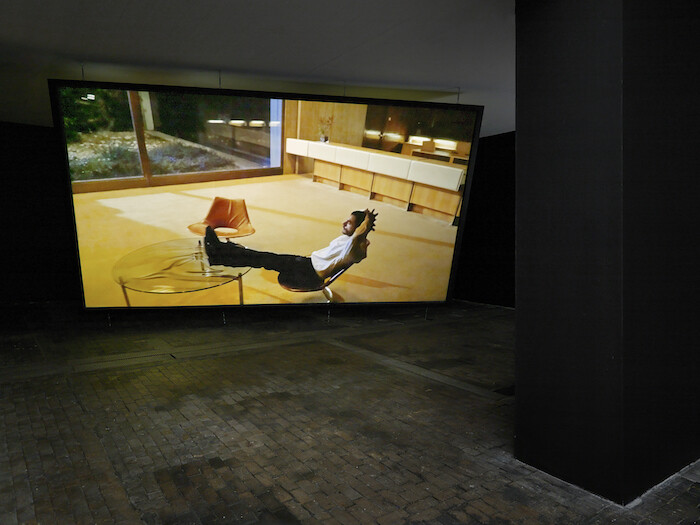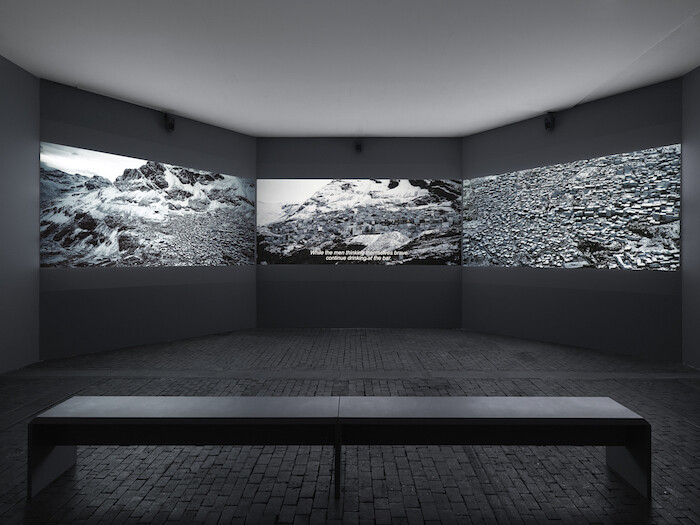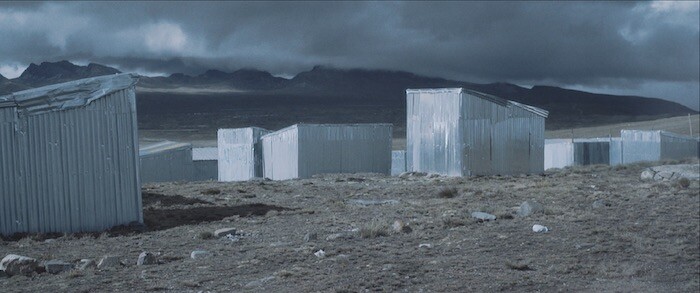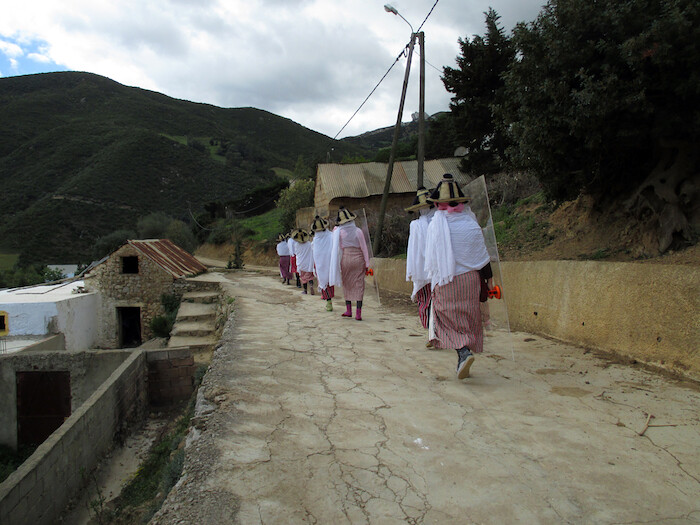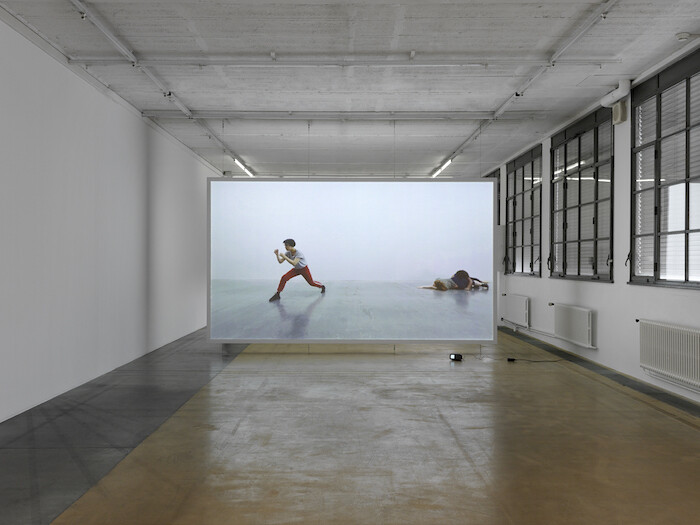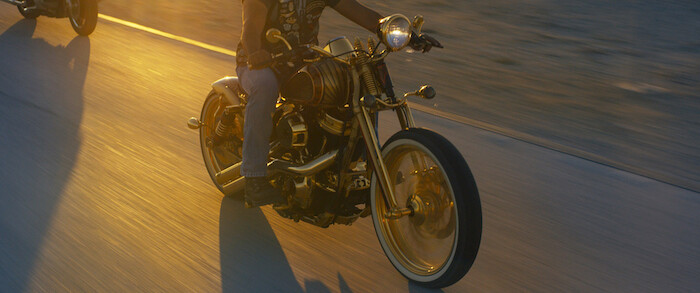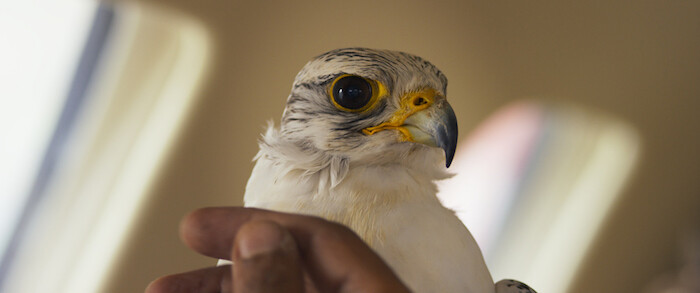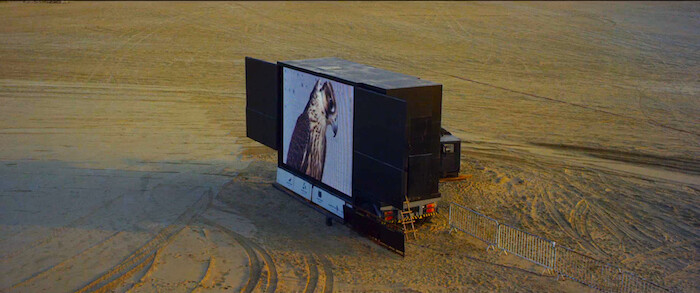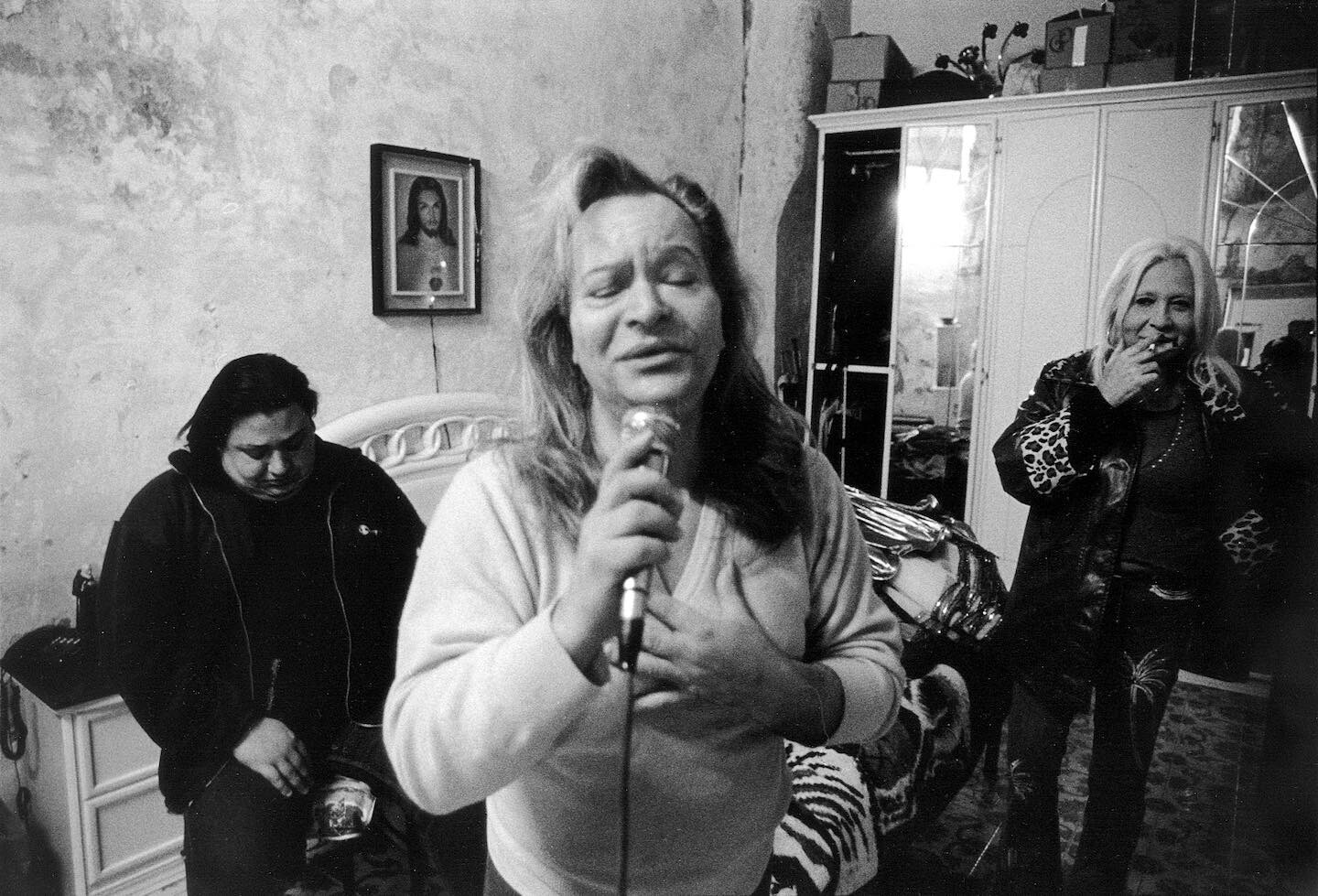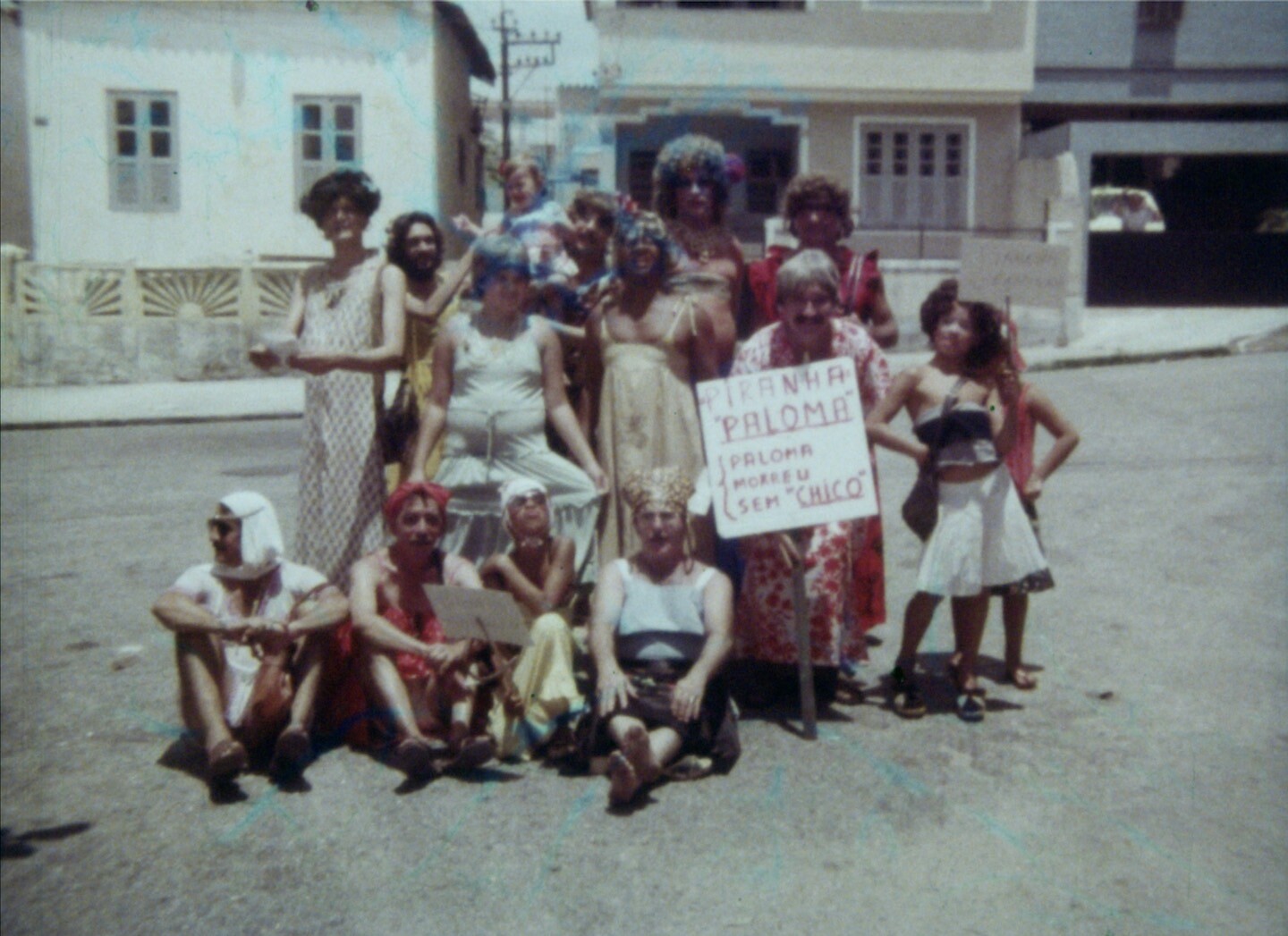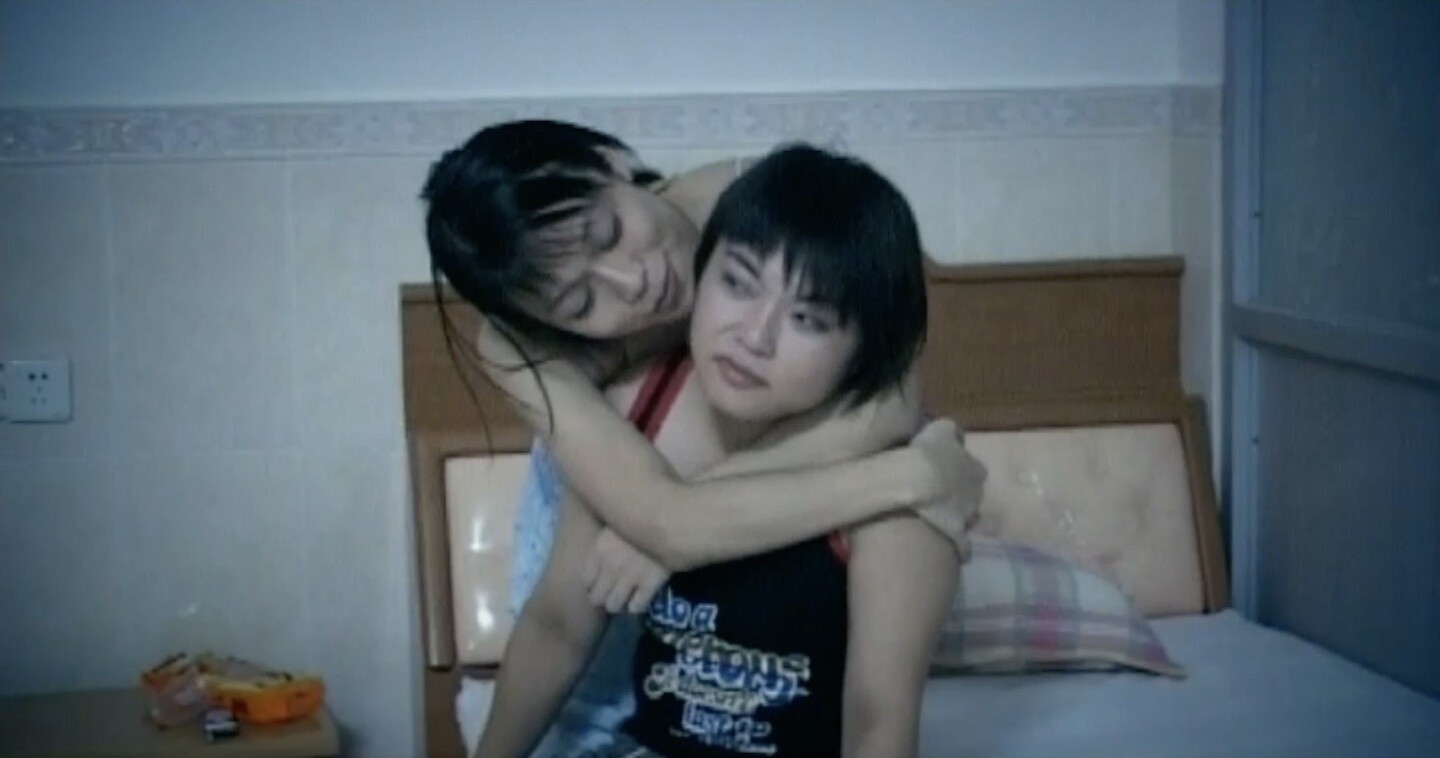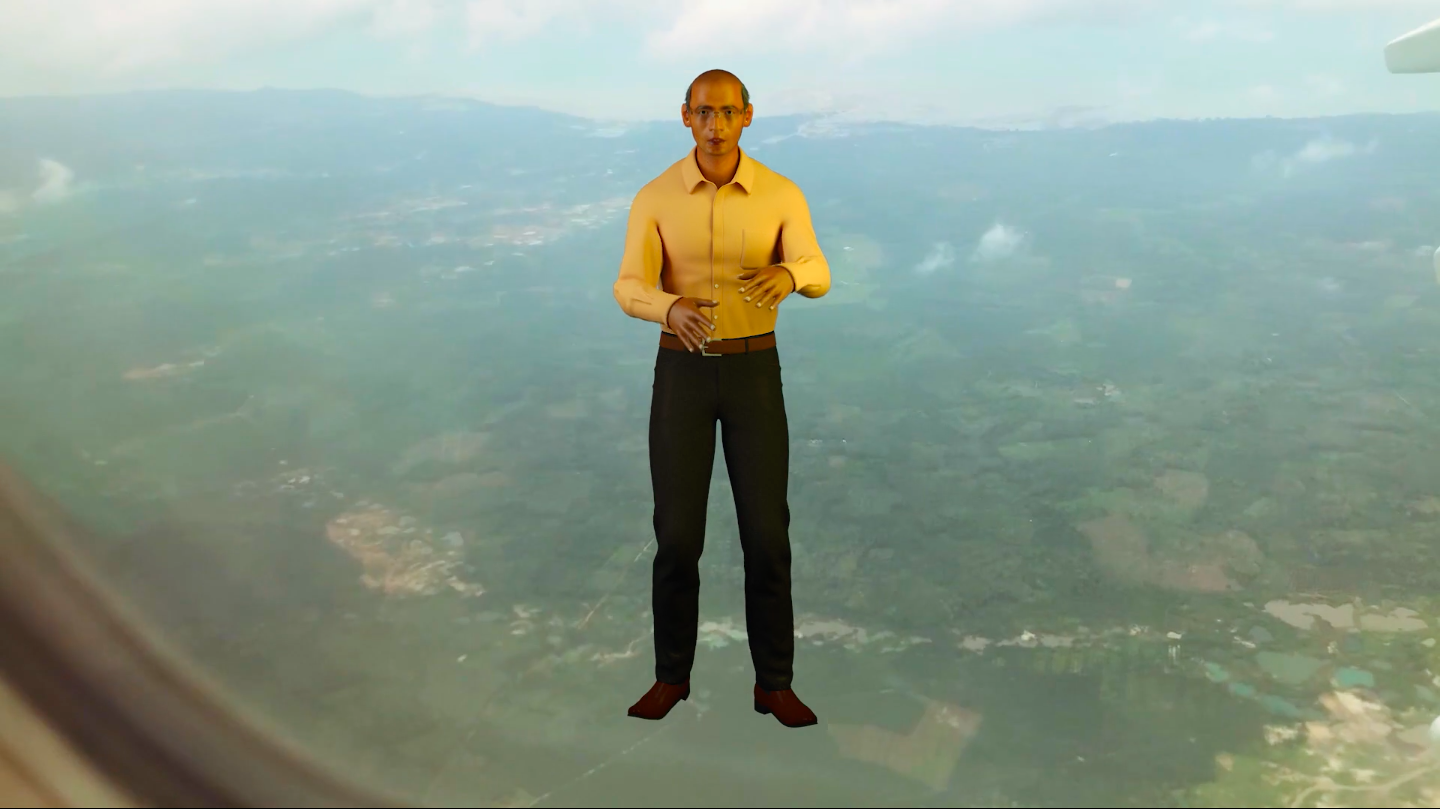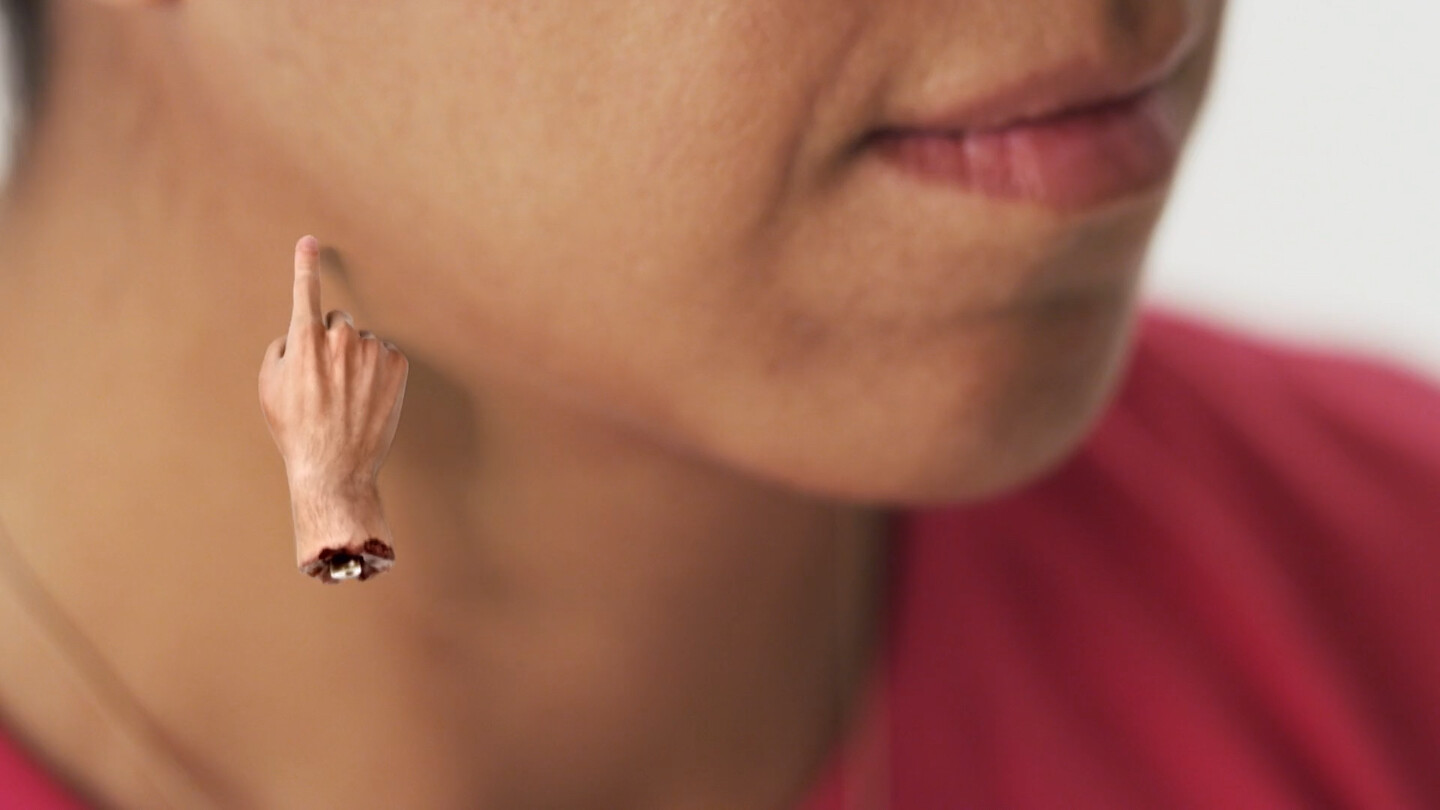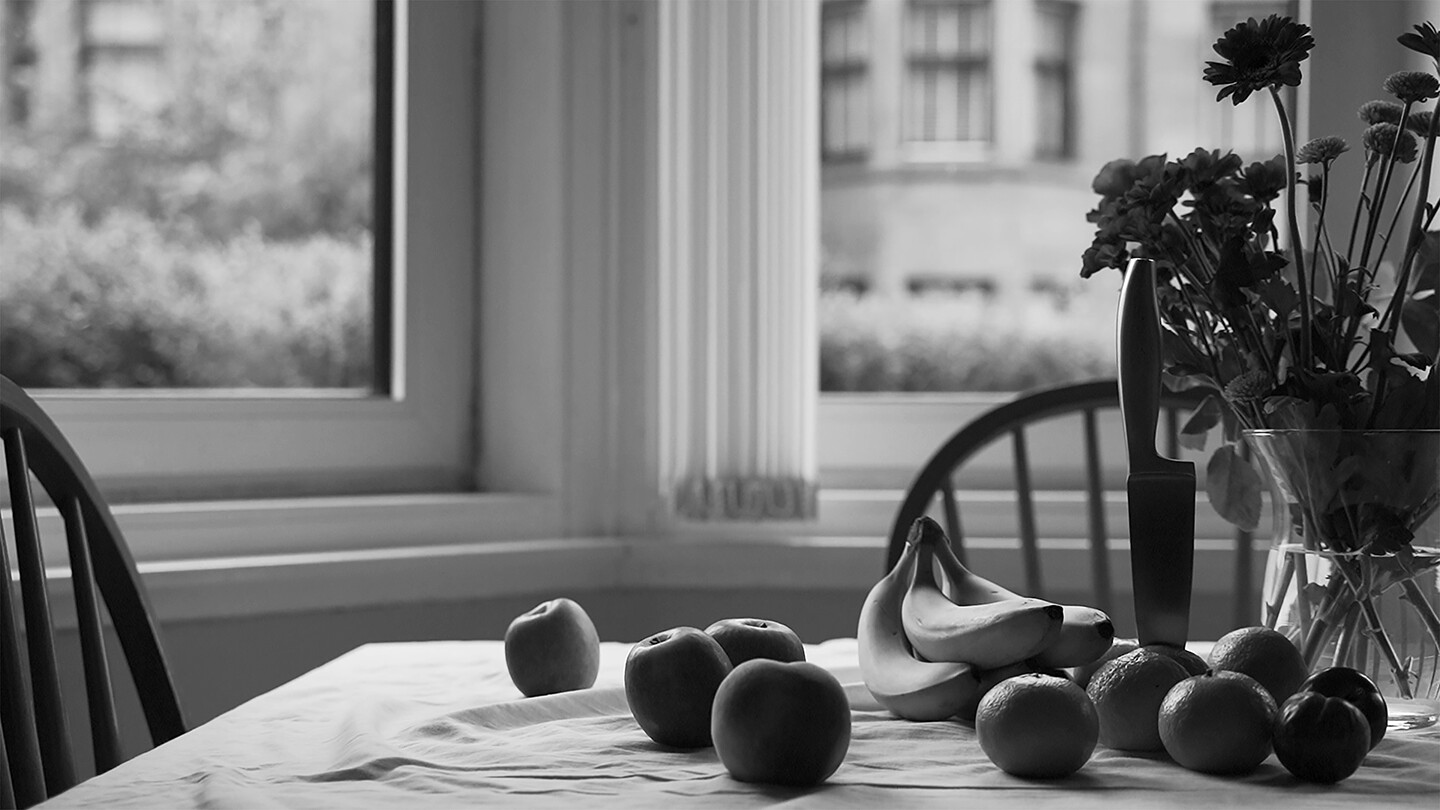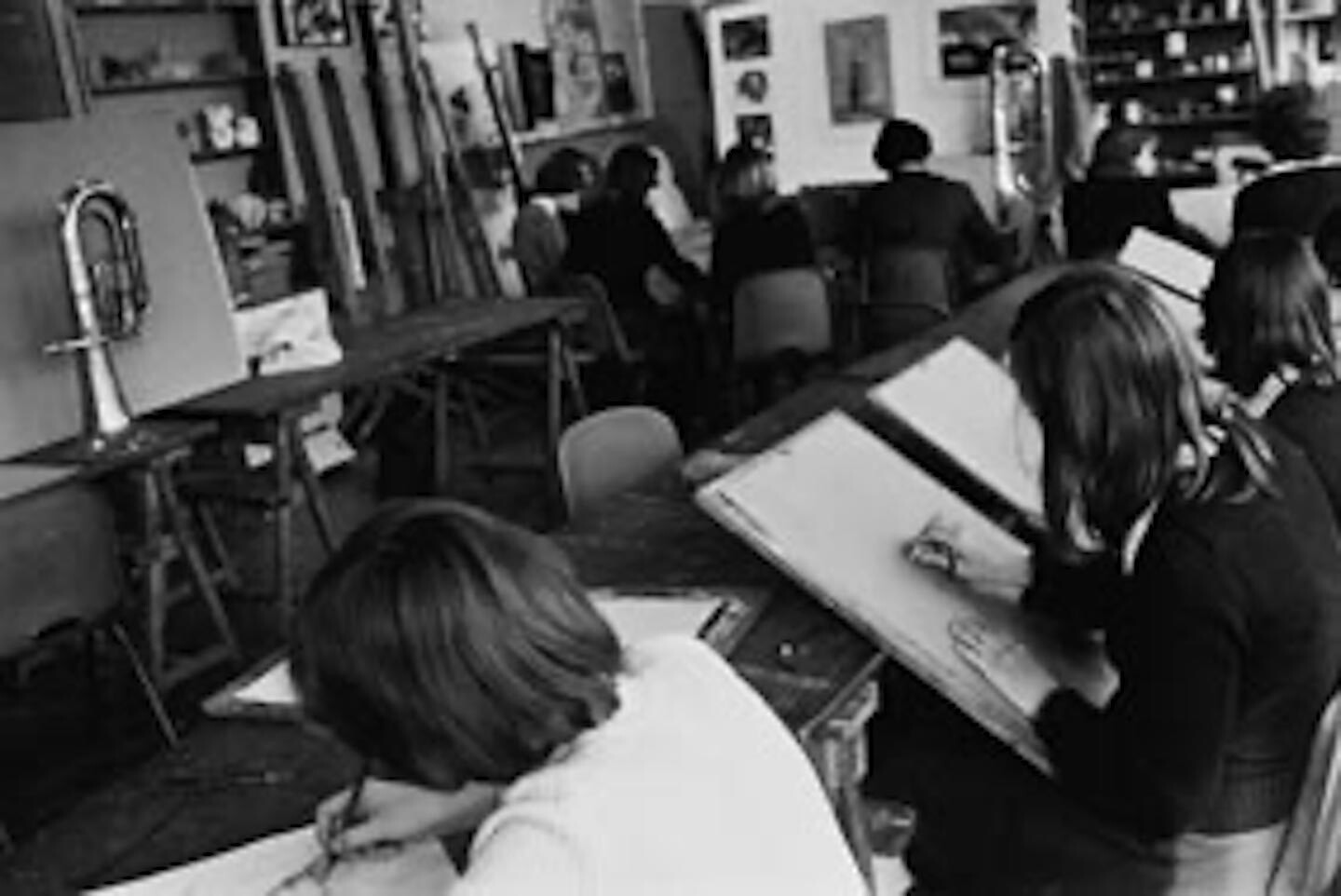November 9, 2016–January 28, 2017
“Dear President, / Your profile is vague, / You have no arms, no hair, no legs, and no sex / Your enemy is your lover. / I need make-up, underwear and hormones! / Dear visitor, / Are you optimistic, / When our country is at war? / Is freedom more masculine than genocide? / Is a lie more feminine than allies? / What is the difference between terror, horror, and war? / What is the difference between museum, artwork, and enemy? / It sounds all the same to me!” The HD video Silent (2016) by Pauline Boudry and Renate Lorenz felt painfully timely on the opening night of the Biennale de l’Image en Mouvement (BIM) in Geneva, in the immediate aftermath of Donald Trump’s election to the US presidency. Zoe Leonard’s text piece I want a president (1992) was still circulating manically across social media and its comforting echo chambers, as if to compensate IRL wrongs by means of poetic justice—and there I was, upset, enraged, speechless.
Silent acts as a reminder of the relation between mutism and trauma, between the deceptive multiplication of information and the actual escalation in shutting up freedom of expression and non-conforming positions, identities, agencies, bodies. Shot in Berlin at Oranienplatz (“after the refugee movement Kreuzberg/Berlin and Chelsea Manning,” the artists write) and featuring transgender musician Aérea Negrot, the video opens with the image of a podium full of microphones, behind which the protagonist remains silent for 4 minutes, 33 seconds in homage to John Cage’s famous 1952 composition, before erupting into song. Beneath sealed lips, eloquence resorts to body language, and Negrot’s body powerfully argues against repression. Installed in a clinically white cube with snow-white carpeting, to be accessed with disposable shoe covers, the work elicits further associations with how whiteness-as-norm is constructed and sanitized.
In the absence of an overall theme, it’s our murky zeitgeist that dictates the cohesiveness of this edition of BIM, which introduces 27 new productions, debuting here mostly in two forms: as video installations, each granted an individual room at the Centre d’Art Contemporain Genève and the adjoining MAMCO museum; and as widescreen films projected at Cinéma Spoutnik and Cinéma Dynamo. The opening week also included a series of joint performances by John Armleder and Stephan Eicher, Boudry and Lorenz, and Boychild and Wu Tsang (whose video Duilian, 2016, which premiered at the Berlin Biennale, is on show). The layout, alternating large and small spaces divided by heavy curtains, is well paced and allows for moments of quiet contemplation, with the notable exception of Trisha Baga’s 3D installation MABUHAY (2016). In this tour de force of visual stimulation, where shots of the CERN collider collide with overlapping images, glitches, flying fruits, and fragments of the artist’s travels in the history of the Philippines as well as that of her own family, any attempt to adjust focal distance proves a fail and an eye strain. Our impotence in keeping up with the deluge of images becomes an embodied experience. Emily Wardill’s I gave my love to a cherry that had no stone (2016) also rejects the canonical frontality of projections, instead adopting a large, tilted screen, looming over the visitors. Set in the auditorium of the Calouste Gulbenkian Foundation in Lisbon at night, the film follows the disjointed movements of a dancer across the modernist spaces: there is something sinister in the man’s fast robotic jerks backwards and forwards, and the oddity of his physical demeanor is intensified by short glitches (an eye bulges out, as in cartoons; the background liquefies), so that one inevitably questions what one is looking at.
On the documentary side, a standout is the three-channel installation The Burial of the Dead (2016) by Portuguese filmmaker Salomé Lamas, shot in the gold-mining town of La Rinconada, on the high Andes of Peru, more than 5,000 meters above sea level. After an initial panning shot on the majestic landscape covered in snow, for the majority of the video’s 90 minutes the camera sticks to a disturbing fixity: it records an unrelenting river of obscure bodies, those of the miners climbing up the steep town’s streets at dusk, like insects crawling in the dark. The images form a triptych: a wide central scene, and two side ones that either replicate it or crop it in circular shapes. With little to be seen, the names, voices, and life stories, recounted in the first person, of those who come here to suffer “hunger and cold” occupy center stage. Men and women talk about their family stories and daily labors with a technical lingo that refers to the manual methods used for extracting the mineral as well as to the abusive “legal” rules established by contractors, leaving meager profit and no protection to the workers. “Rinconada is not for everybody,” says one of the miners: it’s a hellish “home of the brave,” bearing witness to how rooted in the ruthless foundation myth of the Gold Rush the American dream is.
Mining is also the subject of Mangeurs de cuivre [Copper eaters] (2016), a film by Bodil Furu, where the extraction of copper and obliteration of the natural landscape in a rural area of the Democratic Republic of the Congo is framed from different perspectives: fictional mythologies, business-oriented discourse, the consequences of Belgian colonialism, traditional methods, the impact of industrial mining, the contemporary life of villagers, their strategies of negotiation—complexity, instead of simplification, ensues. Also playing on the ironic disruption of “ethnographic” iconography is Bertille Bak’s Usine à divertissement [Entertainment factory] (2016), a surreal three-channel video where the impact of mass tourism on three “authentic” indigenous communities in Camargue, Morocco, and Thailand is staged as a series of grotesque, camera-friendly tableaux vivants. How to resist the obligation to perform is also the subject of Drag Drag Solo (2016) by Cally Spooner, an installation comprising a small loudspeaker attached to the wall where the voices of Oprah Winfrey and Ivanka Trump discuss management and maximization of “performativity,” and a suspended screen, cutting the room in two, where a young dancer warms up, over and over again, as if to prepare herself for an imminent exploit. While frustrating viewers’ expectations, Spooner choreographs very precisely their movement in space.
If the works I’ve highlighted so far are mostly by women artists, it’s because they have, indeed, a strong presence in this biennale, directed by Andrea Bellini in collaboration with three external curators, Cecilia Alemani, Caroline Bourgeois, and Elvira Dyangani Ose. So let’s make it even. My last mention goes to Yuri Ancarani’s The Challenge (2016), the Italian filmmaker’s first feature film, which was awarded the Prix Spécial du Jury “Ciné+Cinéastes du present” at the most recent Locarno Film Festival. Shot independently in Qatar over three years, it focuses on falconry as a study for the tech-heavy transformation of old sports into new, more ostentatious forms of entertainment: falcons are monitored via radio monitors, 4x4 trucks, and communication devices; jeep- and drone-rides supplant camels and horses; and open-air festivals are equipped with air-conditioned tents and high-tech plasma screens. The film contains no real dialogue, only ambient sound, so that panoramic shots and Lorenzo Senni’s soundtrack expand to epic proportions—iconic (Western) films on desert life, from Lawrence of Arabia to Easy Rider, come to mind. A caravan of jeeps runs up and down the dunes, from dawn to dusk. A group of Harley Davidson fans, riding shiny and gold-plated motorbikes, stops along the road to pray. A red Lamborghini speeds up, a cheetah sitting next to the driver. It’s an entirely male universe: only the cheetah and the falcon—tamed and leashed—are female, Ancarani tells the audience after the screening. “Nothing happens in this film,” Ancarani says, “the only one actually doing something is the bird, who finally catches her prey.” Thanks to a small camera attached to the falcon, viewers can follow her chase in the skies. I won’t identify with the predator, and I won’t identify with the victim, I thought while watching. Otherwise said, patriarchy sucks.
